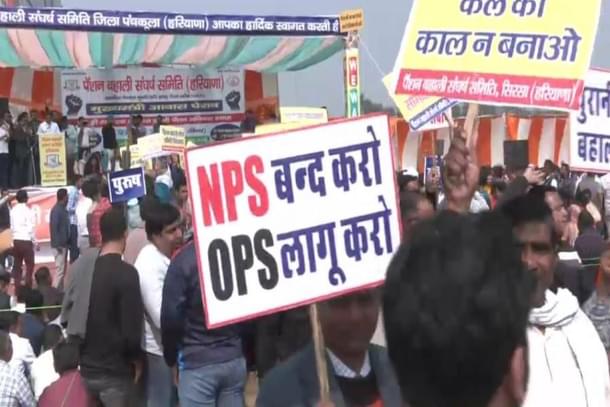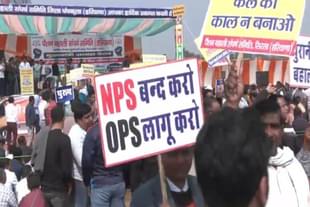News Brief
Reverting To OPS Is a Recipe For Economic Disaster At The State Level
Swarajya Staff
Apr 06, 2023, 06:34 PM | Updated Apr 07, 2023, 10:22 AM IST
Save & read from anywhere!
Bookmark stories for easy access on any device or the Swarajya app.


India underwent an important pension reform in 2003-04 which was initiated by the NDA government — the New Pension Scheme (NPS).
The main component of this reform was to adopt a feasible and wide-ranging pension system that aimed to steady the contribution towards retirement, contrasting with the old pension scheme (OPS) where an obligation was imposed on the government to pay pre-determined benefits to retired public employees.
In OPS, public employees did not have a contributing role, and as the life expectancy of these employees increased, there was an exponential hike in the fiscal burden on the state. The pension reform became inevitable.
Some state governments have recently decided to overturn pension reform and revert to the old and financially unsustainable OPS system. There is also a growing political movement in some states to bring back the OPS system.
In a piece for The Indian Express, Shamika Ravi argued how going back to the OPS system would be beneficial only to a small group with secured jobs, and how it would be against the interests of the rural population, especially poor people.
Ravi has argued that reverting back to the Old Pension Scheme (OPS) would lead to a rearrangement of resources from the state's development expenditure — which benefits the impoverished masses — towards a small group of individuals who have already reaped the benefits of a secured and privileged job throughout their working life.
The allocation of funds to pensions, as a non-development expenditure, created a dilemma for the state governments on how to finance it.
Two primary means were pursued: raise revenues primarily through imposing taxes or finance the deficits through borrowing. A thorough analysis of the situation from 1990 to 2004 revealed an increase in state government deficits.
The revenues generated from taxes did not match the heightened expenditure of the states, causing the exponential spike in government deficits.
Analysing the state budgets, it was seen that the real Gross Fiscal Deficit (GFD) per capita for all states, had more than doubled from INR 995 in 1990 to INR 2,129 in 2003.
While this may appear to be a positive increase, it wasn't entirely the case.
As a percentage of the Net State Domestic Product (NSDP), the ratio of GFD to NSDP increased from 3.6 per cent in 1990 to 4.9 per cent by 2003. To finance the GFD, states heavily relied on borrowing from the market, the National Small Savings Fund (NSSF), and loans from the centre.
This tradeoff between state borrowing for non-developmental expenses and private investment proved to be detrimental to economic growth.
As other governments consider implementing pension reforms, they must carefully assess their potential impact on the poor and vulnerable, particularly women and children.
In states such as Himachal Pradesh and Punjab, pensions already account for a significant percentage of development spending — 37 per cent and 31 per cent, respectively — and reversing this trend could have a devastating effect on the poor population.
Such a reversal would likely result in the poor being deprived of essential services such as health and education, and prevent them from participating in growth opportunities that could improve their economic situation.




